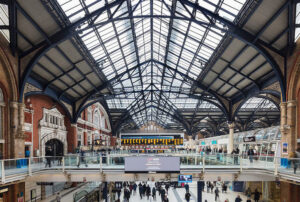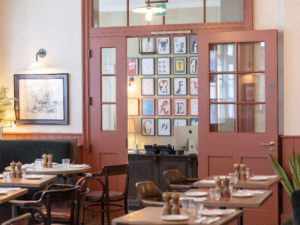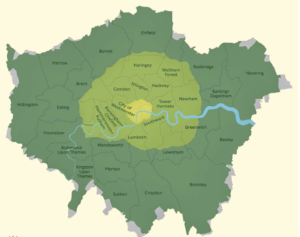In January 2022, nine months after his re-election, Sadiq Khan announced plans to “secure a green, clean and healthy future for London”. These included seeking to reduce the total distance driven by cars in London by 27 per cent compared with 2018. It was one of the “key target outcomes” set out in a detailed report the Mayor had commissioned about how London could reach his goals of achieving “net zero” by 2030 and reducing road traffic congestion and air pollution.
The Mayor said he would look at four options for taking action straight away. The one he chose, extending the Ultra-Low Emission Zone (ULEZ) to cover all of the Greater London, is due to come into effect on 29 August.
Khan also accepted the report’s finding that making significant progress towards that 27 per cent reduction would need, in the words of City Hall’s press release, “a new kind of road user charging system implemented by the end of the decade at the latest”, one which “could abolish all existing road user charges – such as the Congestion Charge and ULEZ – and replace them with a simple and fair scheme where drivers pay per mile, with different rates depending on how polluting vehicles are, the level of congestion in the area and access to public transport”.
City Hall also also told us that Khan had asked Transport for London to look into how such a system could be developed, but added: “It’s clear the technology to implement such a scheme is still years away from being ready”.
What, then, might happen next? The answer will depend on more than the technological practicalities. As the furore surrounding the forthcoming ULEZ expansion has shown, the politics of road user charging (or road pricing) can be fractious.
With the next mayoral election due on 2 May next year, Khan’s Conservative challenger, Susan Hall, has pledged to immediately undo the ULEZ expansion if she wins (though not the earlier one from the initial central London zone out to the North and South Circular roads, which she opposed prior to its October 2021 implementation). So if London is to adopt road user charging comprehensively, a Khan victory next year is a prerequisite.
Opposition to the approaching ULEZ measure looks likely to fade, and London Tories – despite City Hall’s January 2022 announcement – are already characterising TfL’s examination of options for a more advanced form of road pricing as a secretive activity foreshadowing Khan forcing a new “tax” on all London motorists should he win a third term.
For his part, the Mayor will need to make careful choices about the next stage of his car use reduction agenda, with winning the support of Londoners – and their votes – an important consideration. What choices might be open to him?
It isn’t only TfL that has been exploring this question. In April 2019, think tank Centre for London produced proposals for “next generation road user charging” very like the sort Khan has asked TfL to examine. Its report, entitled Green Light, recommended the Mayor and TfL develop options for just such a “distance-based road user charging scheme”, under which drivers would pay by the mile at rates based on distance travelled, emissions from their vehicles, local levels of congestion and pollution, and the relative availability of public transport alternatives to driving.
A single digital system, which the report gives the theoretical name City Move, would replace all the existing camera-based pricing schemes – the Congestion Charge, the Low Emission Zone, the Ultra Low Emission Zone along with any other tolls, such as for the Blackwall and under-construction Silvertown tunnels, that might come on stream in the meantime.
The price of the journey would be set before it began, “based on typical levels of congestion and pollution along a recommended route”. City Move would be a “multimodal London transport platform – a simple integrated website and app for all London’s road and public transport users”. This would enable drivers to, for example, “register for a personal travel account that links Oyster, contactless and driver details”, weigh up journey options – taking in cost, time and so on – “across the full range of [transport] modes”, from bus to bicycle to car club.
City Move accounts would be for individuals rather than attached to particular vehicles, the report said. Creating the system would be a continuation of TfL’s track record of innovating travel technology. “Satellite GPS-enabled smartphones or in-vehicle devices would allow for the accurate tracking and charging of vehicle trips”, with the existing automatic number plate recognition camera network as reinforcement. Paying per mile would become a bit like paying a fare.
This was a comprehensive and, were the technology effectively designed and deployed, potentially achievable proposition with the bonus of being guided by a “user pays, polluter pays” principle. For some, though, it might be complicated as well as alarming from the personal privacy point of view and in wider and deeper ways.
That point was eloquently expressed by Adam Tyndall, programme director (transport) with the business group London First – since renamed BusinessLDN – in a paper published in April 2022. People’s attachments to private motor vehicles include, as Tyndall put it, “an emotional explanation,” with “the cultural trope of the road trip” embedded as “the ultimate expression of freedom”.
In view of this, as well as making the case for more road user charging on congestion, health, environmental and business efficiency grounds, and as a way of helping the city’s road network to “move up a gear” in general, Tyndall emphasised the importance of “the quality of engagement between policymakers, businesses and Londoners”.
He argued for a step up from the ULEZ, which is primarily a tool for limiting pollution from tail pipes, to a London-wide scheme for limiting congestion too. His “sustainable integrated zonal solution” would have the virtues of being a simple next step forward technologically that would also be easy for Londoners (and others) to adapt to and understand. There would be three new congestion and emissions charging zones, based on those that already exist:
- A Central Zone, which would effectively be the original congestion charge zone, founded by Ken Livingstone in 2003, which was also the original ULEZ.
- An Inner Zone stretching out to the North and South Circular roads, which is the territory encompassed by Khan’s first expansion of the ULEZ.
- An Outer Zone covering the rest of Greater London, as the plain old Low Emission Zone has since 2008 (another Livingstone innovation) and the upcoming further enlarged ULEZ also will.
Those three concentric zones could, as Tyndall puts it, “be established almost overnight” by relying largely on existing infrastructure. Charges would be lowest in the Outer Zone, where car dependency is greatest and public transport coverage lowest, and highest in the Central Zone, where the reverse is true in both respects.
All the different existing road pricing schemes “could be incorporated into a single daily charge at a fixed price point that depends only upon how polluting your vehicle is and which zone(s) you access,” Tyndall wrote.
There would be discounts, concessions and Oyster-style daily caps. Tyndall estimated possible average charges of £1.55 for the Outer zone and £2.50 for the Inner Zone. And it would all add up to fewer cars on all of London’s roads, less pollution, and a boost for TfL’s fragile bank account of maybe £400 million a year which, unlike its income from the ULEZ, would not shrink as cleaner cars replaced the dirtiest.
If the type of ultra-sophisticated Centre for London City Move solution is either not available for a while or likely to face strong resistance, the three zones approach might be an effective interim move and, if necessary, could function for a long time.
Whichever path towards that 27 per cent reduction Khan selects, he will need to make his case to Londoners persuasively and shrewdly leading up to next May – and, it appears, largely in political isolation.
Labour nationally has panicking in the aftermath of just failing to win the Uxbridge & South Ruislip by-election result, seeing the six per cent swing in Labour’s favour in a resiliently Tory area as a glass half empty that, but for the ULEZ, would have been full.
The Conservative government too has taken flight from car-curbing transport policies, with Rishi Sunak declaring his opposition to low traffic neighbourhoods. Less conspicuously, his government has poured cold water over a report on road pricing by the Tory majority cross-party Commons transport committee, published in February last year, the month following Khan’s “green, clean healthy future” announcement.
The committee’s report said the government should commission an arms-length body to look at “a road pricing mechanism that uses telematic technology to charge drivers according to distance driven, factoring in vehicle type and congestion” as a way of replacing shrinking revenues from tax and petrol as the number of electric cars has increased.
Telematic technology, which is mentioned in the Centre for London report, involves connecting a device to a car’s dashboard. It is well-explained in the Campaign for Better Transport’s September 2022 report about public attitudes to vehicle taxation reform. The MPs saw “no viable alternative to this” if motoring taxation was to be linked to road usage. But, almost a year later, in January 2023, Chancellor Jeremy Hunt informed the committee that “the government does not currently have plans to consider road pricing”.
But while national politicians have anxiety attacks about road user charging, it is clear from the Commons transport committee report that government officials see it as inevitable. Last December, appearing before the London Assembly’s transport committee, Nick Bowes, formerly Sadiq Khan’s policy director and by then Centre For London’s chief executive, spoke of Whitehall’s “desperation” for London to take the lead on the issue:
“They are desperate for London to go first for two reasons, the first is to just test public opinion; there is a view that London is probably the place where you can do this ahead of the rest of the country, and it has shown that on other road user charging schemes. And secondly, they can iron out any problems and then they can adopt it nationally. I fully expect that they would be urging TfL on behind the scenes to push ahead with this.”
Every move towards road user charging in Britain has been strongly and sometimes angrily resisted. When London’s Congestion Charge appeared on the horizon it was stoutly opposed even before the mayoralty, with its powers to implement it, was established. For example, in 1999 Conservative Richard Ottaway, the MP for Croydon South, said in the Commons that he shared widespread concern about congestion and pollution, but added that “clobbering the motorist is not the solution” and rejected outright what he called the Labour government’s “anti-car rhetoric”.
Four years later, in February 2003, London’s first Mayor, Ken Livingstone, introduced the central London congestion charge despite the disquiet of that “anti-car” Labour government and even of his own most trusted advisers. In May 2004, he was comfortably re-elected. The parallels are not exact, but maybe that is nonetheless a good omen for Sadiq Khan.
Twitter: Dave Hill and On London. If you value On London and its writers, become a supporter or a paid subscriber to Dave’s Substack. Image from C40 Cities.








